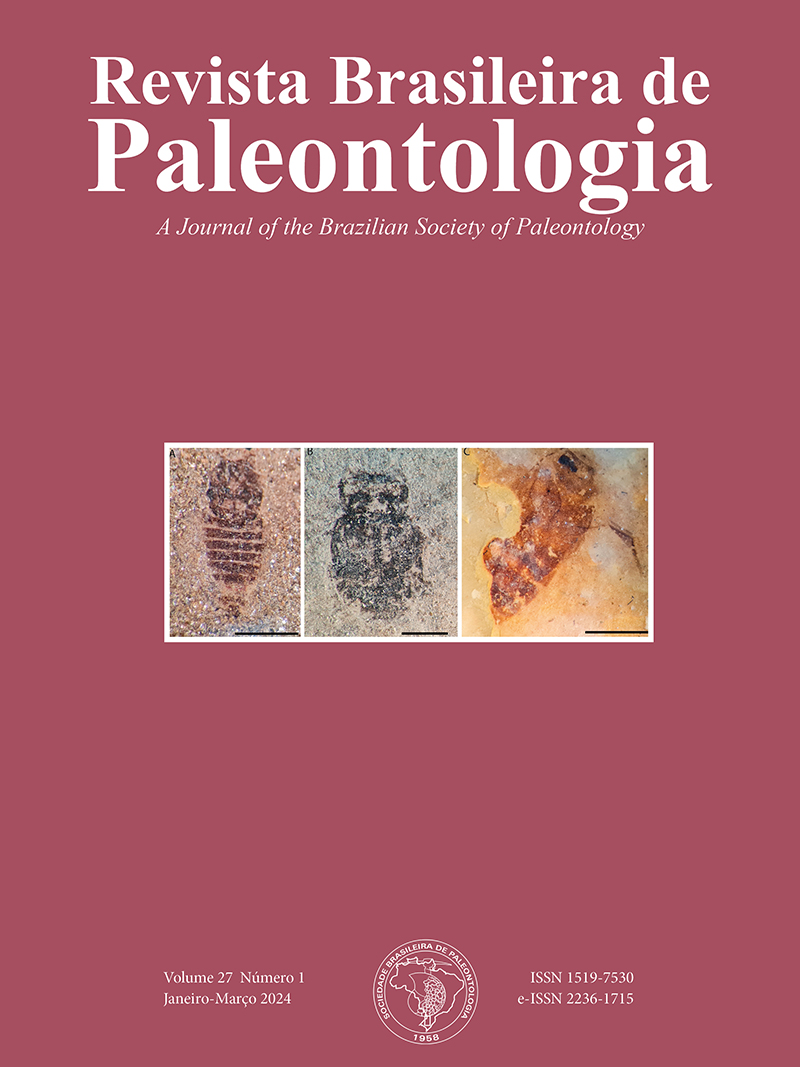Distribution of Thanetian-Ilerdian biozones in Lorestan Zone, West of Iran
DOI:
https://doi.org/10.4072/rbp.2024.1.0385Abstract
The Taleh Zang Formation is a carbonate sequence of the late Paleocene–early Eocene age in the Lorestan zone, west of Iran. This Formation overlays siliciclastic rocks of the Amiran Formation and is overlain by red sandstone of the Kashkan Formation. A biostratigraphic scheme, based on the larger benthic foraminifera, is proposed for the Thanetian–Ilerdian deposits in Lorestan Zone. We compare our results with the available data from other parts of Tethys and the zonation of shallow-marine Paleocene–Eocene of Mediterranean Tethys is made. In total, 367 samples were collected from the six sections. From a biochronostratigraphic point of view, three biozones and one indeterminate zone are identified. The zones are shallow benthic zone 3 (early Thanetian), shallow benthic zone 4 (late Thanetian), and shallow benthic zone 6 (early Ilerdian). In the northern part of the Lorestan Zone (Kabutar Bula and Psht-e Jangal sections), the Taleh Zang Formation contains poor fauna. Due to the stratigraphic position, an early Thanetian age can be considered. Our data showed that the late Paleocene and Eocene biozones in Lorestan Zone developed parallel to the axis of the folding, in a northwest-southeast trend. They get younger from the northeast to the southwest.
Keywords: biostratigraphy, Eocene, Foraminifera, Lorestan Zone, Paleocene.
Resumo – A Formação Taleh Zang é uma sequência de carbonato do final do Paleoceno e Eoeoceno na zona de Lorestan, a oeste do Irã. Esta formação está sobreposta às rochas siliciclásticas da Formação Amiran e é coberta por arenitos vermelhos da Formação Kashkan. Um esquema bioestratigráfico, baseado em foraminíferos bentônicos maiores, é proposto para os depósitos do Tanetiano–Ilerdiano na zona de Lorestan. Comparamos nossos resultados com dados disponíveis de outras regiões do Tétis, o que permitiu a zonação do Paleoceno–Eoceno em ambientes marinhos rasos no Tétis Mediterrâneo. No total, foram coletadas 367 amostras em seis seções. Do ponto de vista biocronoestratigráfico, identificamos três biozonas e uma zona indeterminada: a zona bentônica rasa 3 (início do Tanetiano), a zona bentônica rasa 4 (final do Tanetiano) e a zona bentônica rasa 6 (início do Ilerdiano). Na parte norte da zona de Lorestan (seções Kabutar Bula e Psht-e Jangal), a Formação Taleh Zang apresenta baixa abundância de fósseis. Com base na posição estratigráfica, é possível atribuir uma idade do início do Tanetiano a estas camadas. Nossos dados indicam que as biozonas do Paleoceno e do Eoeoceno na zona de Lorestan se desenvolveram paralelamente ao eixo de dobra, seguindo uma tendência noroeste-sudeste, tornando-se progressivamente mais jovens do nordeste para o sudoeste.
Palavras-chave: bioestratigrafia, Eoceno, foraminíferos, Zona Lorestan, Paleoceno.
Downloads
Downloads
Published
How to Cite
Issue
Section
License
Copyright (c) 2024 Revista Brasileira de Paleontologia

This work is licensed under a Creative Commons Attribution 4.0 International License.
This is an Open Access article distributed under the terms of the Creative Commons Attribution-NonCommercial-NoDerivatives license (http://creativecommons.org/licenses/by-nc-nd/4.0), which permits non-commercial re-use, distribution, and reproduction in any medium, provided that no alterations are made and the original article is properly cited. The written permission of Revista Brasileira de Paleontologia must be obtained before any commercial use and/or adaptation of the article.







